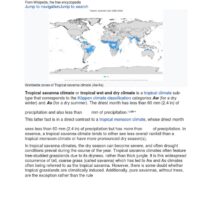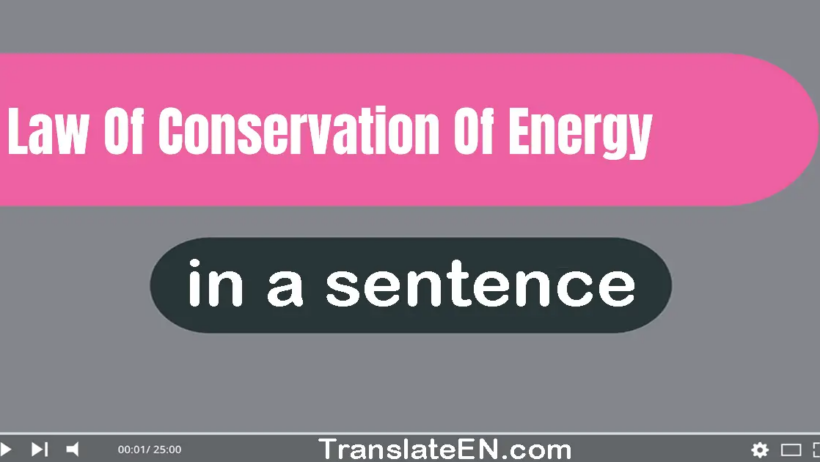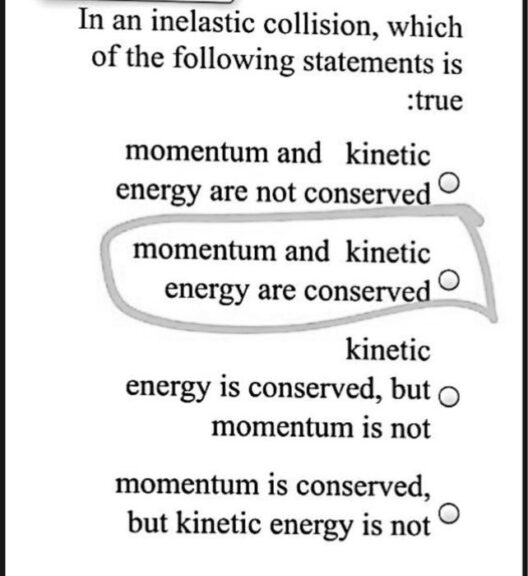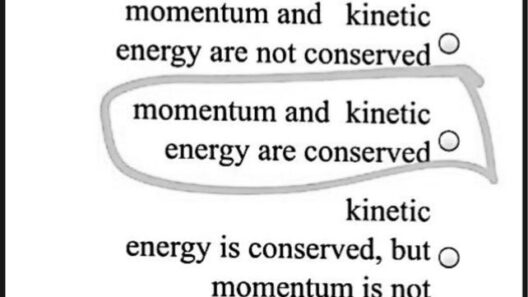The Law of Conservation of Energy is a fundamental principle that asserts energy cannot be created or destroyed; it can only be transformed from one form to another. This concept, while seemingly straightforward, encapsulates profound implications that ripple through various scientific disciplines, including physics, chemistry, and even broader discussions regarding our environment. Its simplicity is precisely what makes it so powerful, serving as a linchpin in understanding not just the universe but also the intricate relationships that govern ecological sustainability.
At its core, the Law of Conservation of Energy emphasizes the necessity of energy transition. When we observe phenomena such as the fall of an apple from a tree or the way sunlight nourishes plants, we are witnessing manifestations of energy transfer and transformation. The apple’s gravitational potential energy is converted into kinetic energy as it falls, while plants transform solar energy into chemical energy through photosynthesis. These examples, while commonplace, illustrate a universal truth: energy’s omnipresence and its unyielding cycle.
One might wonder why this principle captivates the imagination so intensely. The reason lies in its ability to connect seemingly disparate realms of knowledge. In physics, it forms the foundational basis for understanding mechanical systems, thermodynamic cycles, and electrical circuits. In chemistry, it underpins reactions and balances, dictating how chemical bonds are made and broken. Moreover, in environmental discussions, it highlights the critical importance of energy efficiency and renewable resources in combating climate change.
The conservation of energy principle also stimulates curiosity about the origins and fate of energy itself. Consider the majestic sun, a colossal furnace that has emitted energy for billions of years. This energy travels across the void of space, eventually reaching Earth and instigating life. The transformation of solar energy into the chemical energy of glucose empowers the entire food chain, from the tiniest phytoplankton to the largest terrestrial mammals. Understanding this continuous cycle encourages deeper contemplation about energy use, sustainability, and our role in preserving the natural world.
In the realm of human civilization, the law manifests starkly in our energy consumption practices. The Industrial Revolution marked a significant shift in energy usage, transitioning from reliance on renewable resources—like wind and water—to fossil fuels such as coal, oil, and natural gas. While fossil fuels propelled societies into unprecedented growth, they also extracted a heavy toll on the environment, culminating in climate crises and resource depletion. Every joule of energy consumed from these sources translates to carbon emissions, a direct challenge to the Law of Conservation of Energy that illustrates the balance we must navigate.
As we grapple with modern challenges, the conservation of energy is a clarion call for innovation and responsibility. Renewable energy technologies, such as solar panels, wind turbines, and hydroelectric plants, demonstrate the ongoing transformation of energy. These technologies embody the principle of conservation by harnessing naturally occurring processes to provide sustainable energy solutions. By investing in research and development, society can explore ways to optimize energy usage, thereby mitigating adverse environmental impacts.
Additionally, energy conservation at an individual level plays a crucial role. Simple actions—turning off lights, utilizing energy-efficient appliances, and opting for public transport—are all manifestations of applying the law in daily life. The intertwining of personal responsibility with global sustainability creates a tapestry of collective action, emphasizing that small changes can lead to monumental impacts when embraced by the masses.
Moreover, this principle invites inquiry into the concept of energy inequality. The distribution of energy resources is often skewed, with affluent nations consuming a disproportionate share of global resources. This disparity prompts ethical considerations about energy access and environmental justice. Should the Law of Conservation of Energy be merely a theoretical discussion, or should it compel us to reconsider our societal structures and practices? The moral implications are profound, pushing society to ensure equitable access to energy resources, particularly for underprivileged communities.
The philosophical undertones of the Law of Conservation of Energy also offer fertile ground for contemplation. It engenders a dialogue about the interconnectedness of all systems—biological, physical, and social. Traditional insights highlight that energy is never truly lost; it merely changes form, inviting reflections on mortality and the cyclical nature of existence. Whether it’s the conversion of organic material to energy via combustion or the decomposition of matter returning nutrients to the soil, these transformations resonate with the cyclicality observed in life itself.
As humanity faces escalating environmental challenges, the Law of Conservation of Energy becomes a pivotal guidepost. It highlights the imperative for systemic change in energy production, consumption, and distribution. Knowledge of this law fosters an understanding that every action undertaken has ramifications in the global energy landscape. With each choice, we hold the potential to align ourselves more closely with sustainable practices, echoing the natural world’s rhythms and respecting the delicate balance of our ecosystems.
In conclusion, the Law of Conservation of Energy transcends its role as a mere scientific principle; it emerges as a philosophical lens through which to evaluate our existence and our impact on the planet. The realization that energy is perpetually in flux challenges us to be conscientious stewards of the Earth, where every decision carries significance. This singular sentence encapsulates the complex narratives woven into the fabric of our universe, urging us to reflect on our choices and advocate for a sustainable future marked by balance and respect for the natural world’s intrinsic laws.







